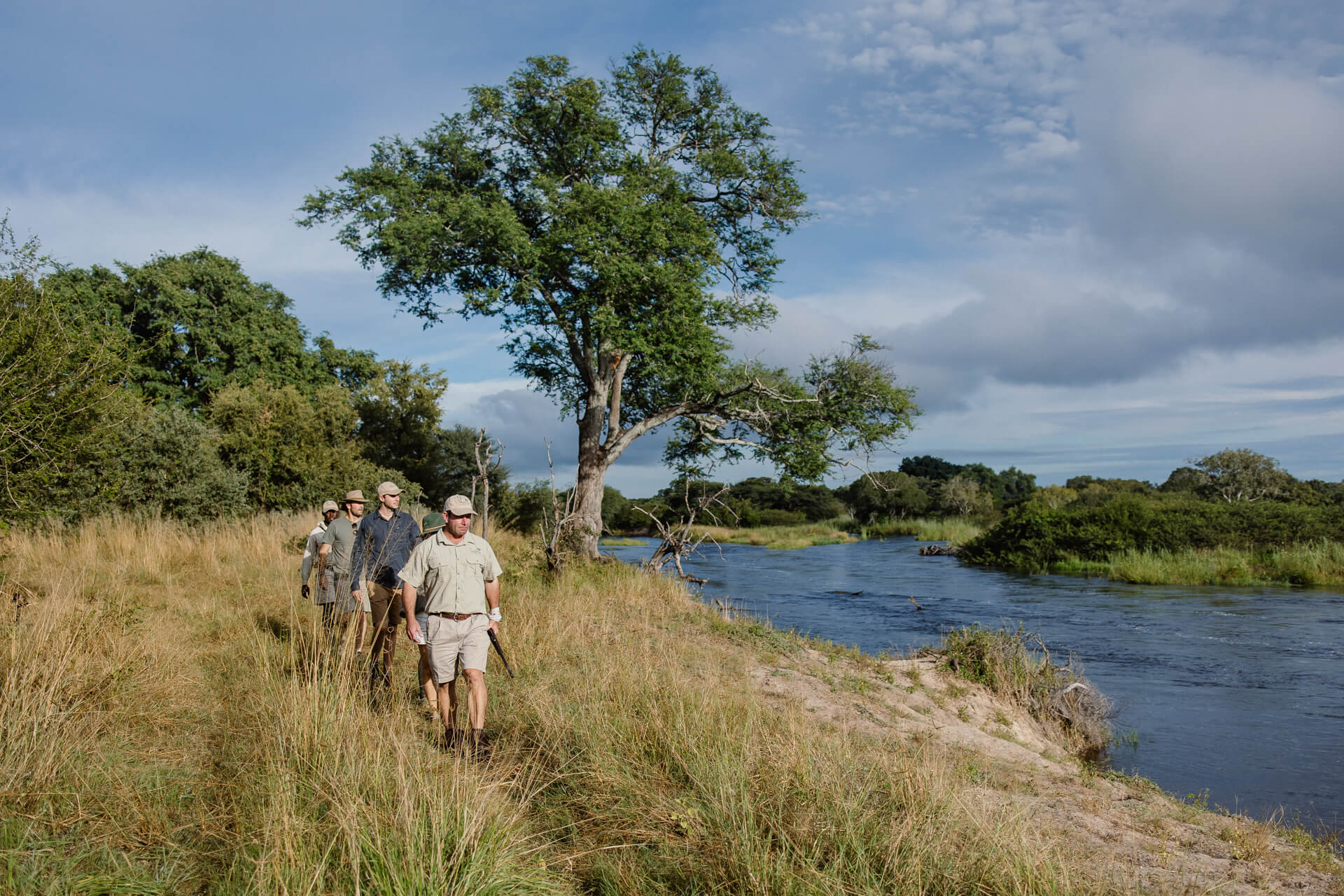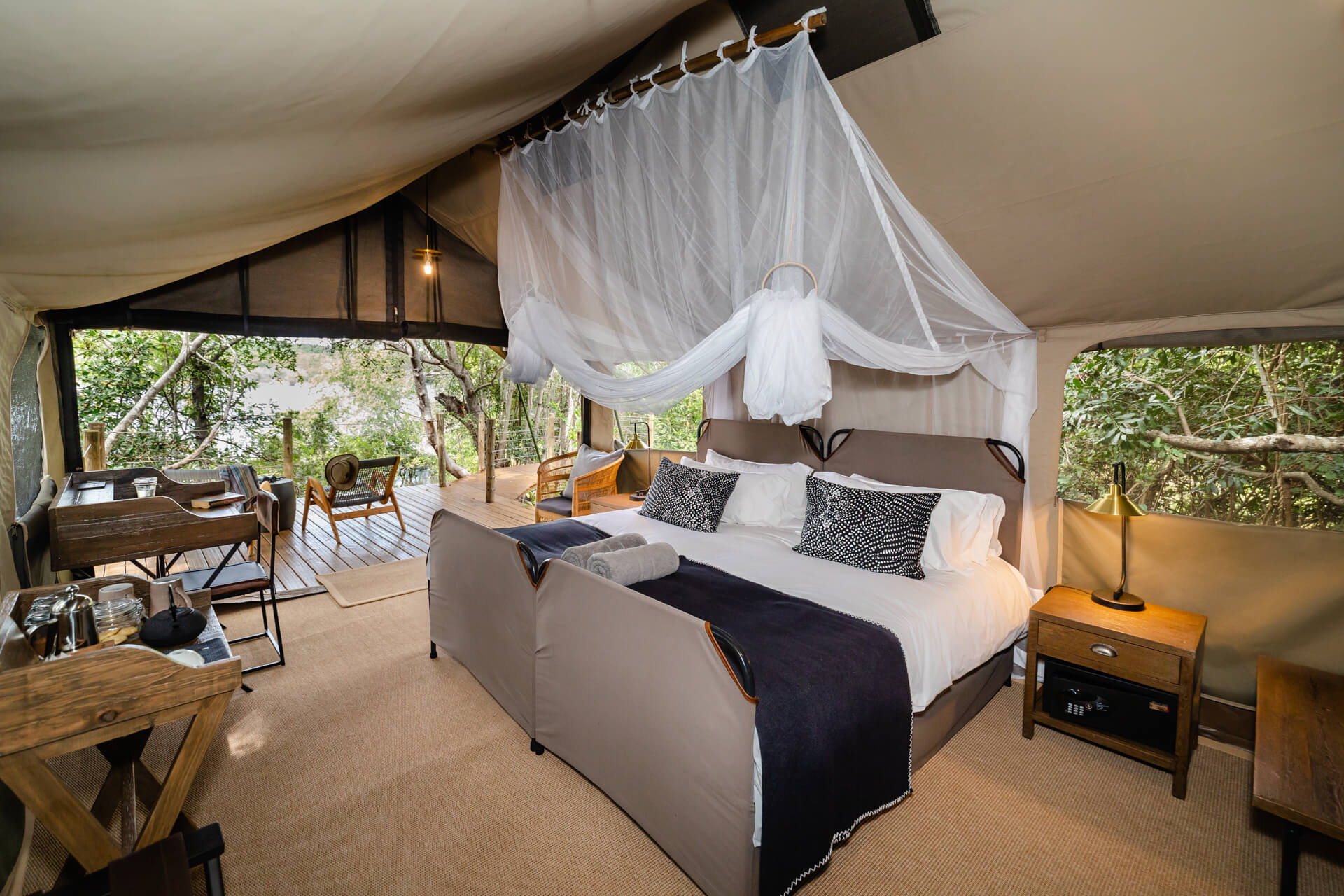Zambezi River Safari Seasons: What to Expect Throughout the Year
Posted in: Experiences
Posted on: May 14, 2025
The mighty Zambezi River, winding through the heart of Zimbabwe near Victoria Falls, is a safari experience that changes dramatically with the seasons. For travelers planning a Zimbabwe safari adventure, understanding these seasonal rhythms can transform your journey from memorable to utterly magical. Here’s your comprehensive guide to experiencing the Zambezi’s changing moods throughout the year.
The Green Season (November–March)
The summer rains breathe vibrant life into the Zambezi Valley during these months. The landscape transforms into lush emerald expanses as vegetation bursts forth to celebrate the water’s return.
Victoria Falls reaches peak water flow by February and March, creating a spectacular sight as millions of litres cascade over the edge every minute. The “smoke that thunders” truly lives up to its name during this time, with spray visible from miles away.
The Green Season sees newborn animals take their first steps across the plains and predators become more active. The landscape’s dense vegetation, while beautiful, can make spotting some animals more challenging. However, migratory birds arrive in spectacular numbers, and it’s an exceptional time for bird enthusiasts on a Zimbabwe safari.
At Tsowa Safari Island, guests enjoy nature’s splendour from private canvas suites nestled under the forest canopy. Morning coffee around the campfire becomes a sensory feast as you notice birds flitting between rain-washed trees while hippos grunt contentedly in the river nearby. Our beautiful area is home to over 450 bird species.
🌡️ Temperature Details:
☀️ Daytime: Typically ranges from 26°C to 31°C (79°F to 88°F).
🌙 Nighttime: Generally, between 17°C to 22°C (63°F to 72°F).
💪 Recommended Activities:
- Bird Watching: The influx of migratory species makes this season a paradise for bird enthusiasts.
- Photography: Dramatic skies and vibrant landscapes offer stunning photographic opportunities, though be mindful of the spray at Victoria Falls.
The Transition Period (April–May)
As rains recede, the Zambezi Valley enters a period of perfect balance. The landscape remains green while skies are clear, creating ideal photography conditions for your African safari. Victoria Falls maintains impressive volume while becoming more visible as the spray reduces.
Wildlife begins concentrating around permanent water sources as seasonal pans dry up, making game viewing increasingly rewarding. Evening safari drives from Tsowa Safari Island often reward guests with elephants crossing between Zimbabwe and Zambia as they use ancient pathways across the Zambezi.
The moderate temperatures make this shoulder season exceptionally comfortable for combining safari activities with adventures around Victoria Falls. Many consider this the secret sweet spot for a complete Zimbabwe safari experience.
🌡️ Temperature Details:
☀️ Daytime: Averages between 25°C to 30°C (77°F to 86°F).
🌙 Nighttime: Cooler, ranging from 12°C to 18°C (54°F to 64°F).
💪 Recommended Activities:
- Safari Drives: As animals gather around remaining water sources, sightings become more frequent.
- Victoria Falls Tours: With reduced spray, the falls are more visible, enhancing the viewing experience.
The Dry Season (June–October)
The classic safari season arrives as water becomes increasingly scarce in the landscape. The Zambezi’s water levels drop and create natural crossing points for wildlife.
Game viewing peaks during these months as animals congregate along the riverbanks. From Tsowa Safari Island’s private island location within Zambezi National Park, guests see elephant herds, buffalo, and numerous antelope species coming to drink daily, often just meters from camp.
Predator sightings also increase as lions and leopards target prey visiting predictable water sources.
Victoria Falls transforms dramatically during this period, with the Zimbabwean side maintaining flow while portions of the Zambian side may dry completely. This unique phenomenon allows for extraordinary experiences like swimming in natural pools at the edge of the falls (Devil’s Pool) when water levels permit.
🌡️ Temperature Details:
🗓️ June–August:
☀️ Daytime: Ranges from 21°C to 28°C (70°F to 82°F).
🌙 Nighttime: It can drop to between 6°C to 12°C (43°F to 54°F), so packing warm clothing for early morning and evening activities is recommended.
🗓️ September–October:
☀️ Daytime: Temperatures rise significantly, often reaching 30°C to 35°C (86°F to 95°F), and occasionally higher.
🌙 Nighttime: Remain warmer, typically between 15°C to 20°C (59°F to 68°F).
💪 Recommended Activities:
- Canoe Safaris: Paddle along the upper Zambezi River, navigating its gentle channels and getting a unique perspective on the wildlife and scenery.
- Walking Safaris: With thinner vegetation, guided walks provide safe and thrilling close-up observations of wildlife.
- Fishing: The ideal time for catch-and-release fishing excursions on the Zambezi target species like tigerfish and bream.
Planning Your Zimbabwe Safari
Whatever season you choose, Tsowa Safari Island’s mindful luxury under canvas provides the perfect base for exploring the Zambezi’s changing moods. With limited eco-lux tents set on a private island in Zambezi National Park, guests experience an intimate connection with the river’s rhythms.
Here, you’ll wake to the sounds of the Zambezi River, enjoy expertly guided adventures, and savour exceptional cuisine. End each day with a sundowner overlooking a hippo-filled river as the African sun melts into the horizon.
The Zambezi’s seasons each offer their own magic—not better or worse, just different windows into Africa’s soul. So, when will you embark on your Zimbabwe safari adventure? Book your stay today and start your unforgettable journey at Tsowa Safari Island.





